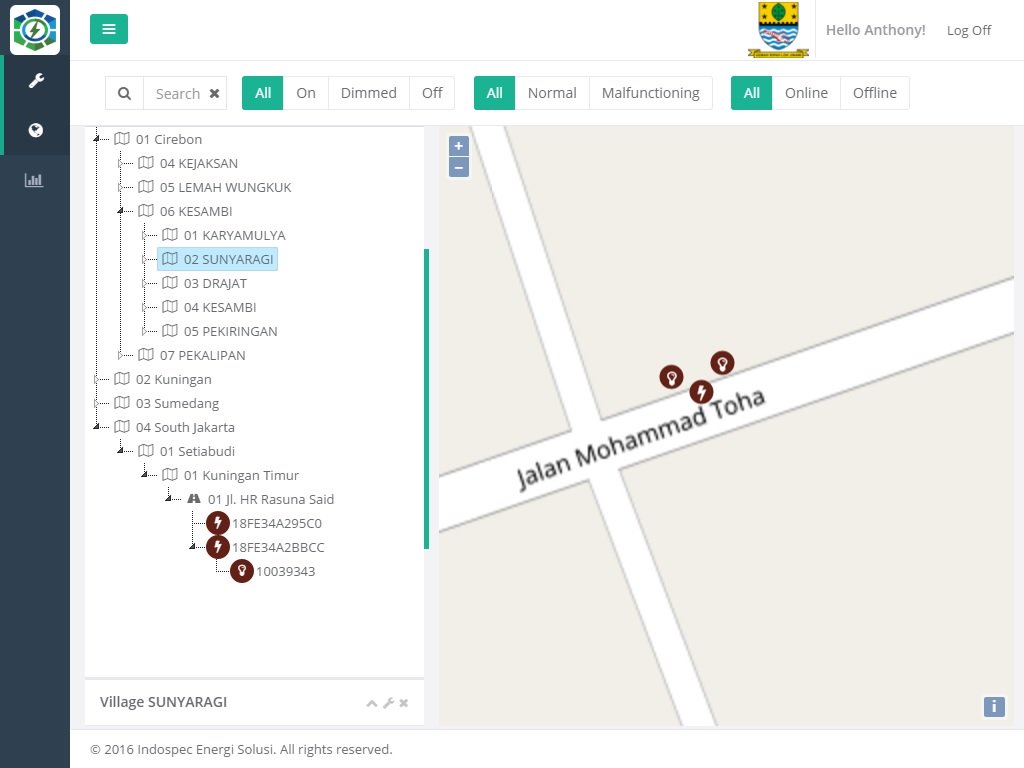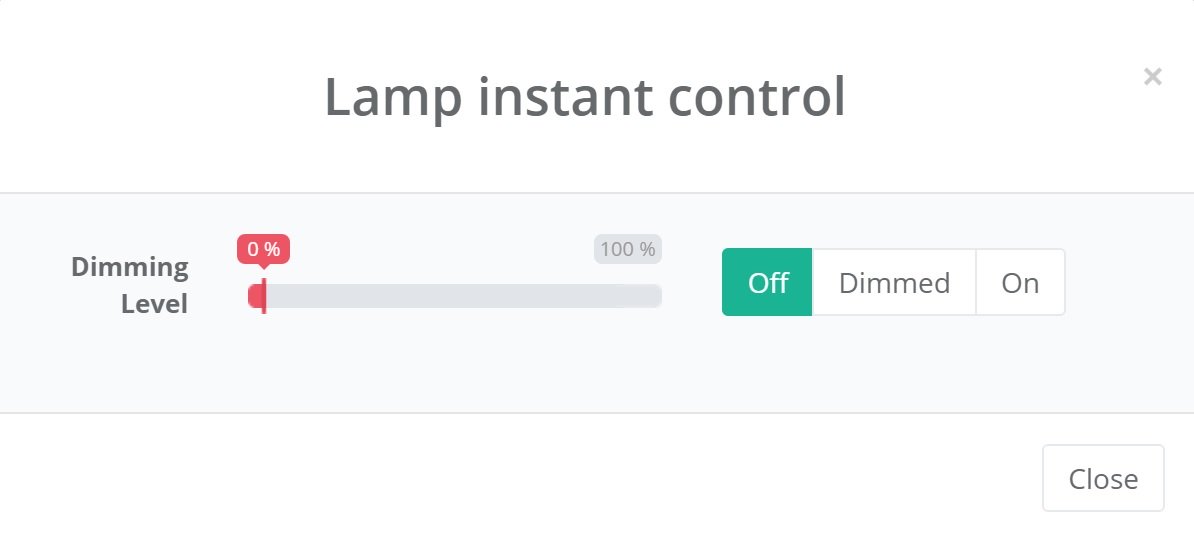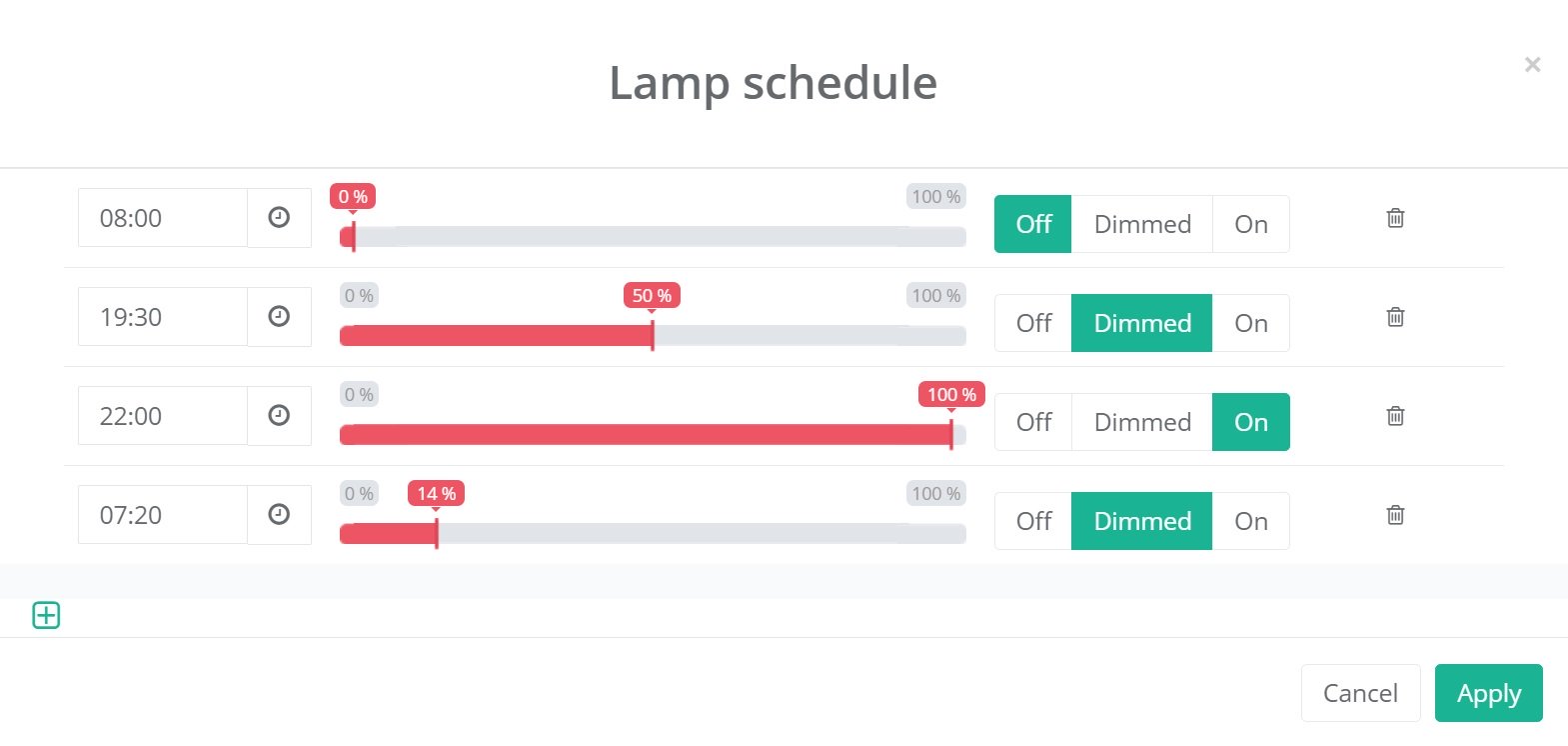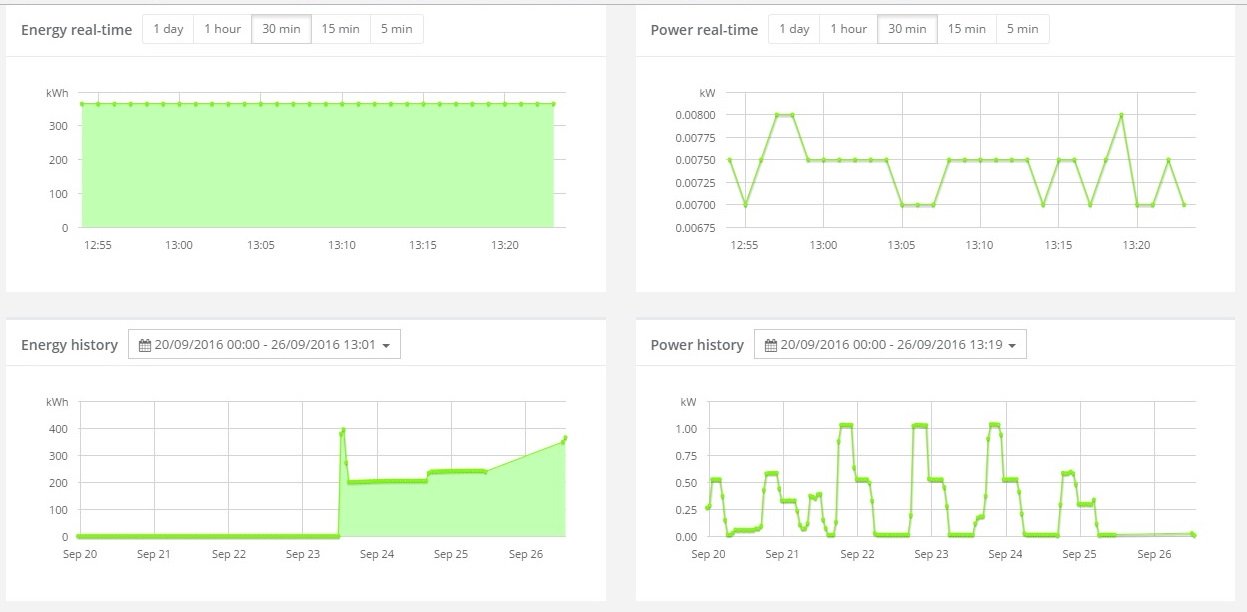Street lighting is an indispensable part of urban infrastructure.
Lighting should be efficient, provide safety for citizens and have a self-diagnosis system for
when devices break down.
Often it is necessary for some lighting units to operate in a special mode,
lighting up important locations like pedestrian crossings and crossroads.
Manual management of street lighting doesn't allow the goals of municipal administration to be
achieved effectively.
Solution
Modern LED lights, microcontrollers with a Wi-Fi module and the Internet of Things allow us to
solve
the abovementioned tasks and provide a high level of automation, reduce the complexity of
infrastructure
installation and maintenance, and increase the accuracy of device management.
The street lighting management system we developed consists of the following components:
- Management blocks for lights and energy counters
- Central device management server
- Operator web interface
- Field engineer mobile web interface
Management blocks
Each lamppost is equipped with a management block running on an ESP8266 microcontroller.
Microcontrollers form a wireless mesh network which allows the appliances to interact
with each other on the principle of a peer-to-peer network with no single access point.
Each appliance connects to several others within the coverage area. Routing from one device to
another
is carried out using intermediary devices. If one of them breaks down, routing automatically
adapts to the changed network topology. A mesh network can be used both in a local network
and to provide Internet access through one or several gateways. In the street lighting
management system
a mesh network removes the necessity of stretching communication lines between lampposts.
An energy counter management is developed based on the ESP8266 microcontroller; it measures the
output
and consumption of electrical energy and manages the contactor. Management blocks interact with
the central server online.
Each block receives commands from the central server and at regular intervals sends out telemetry
data:
light fixture temperature, real time lamp current, counter power load etc. If there's a
temporary
loss of connection to the server the data is saved in the device's non-volatile memory and sent
later when the connection is reestablished.
Management server
The central server gathers diagnostic and telemetry data from the management blocks and provides
notifications
to the management blocks about changes to device configuration. Device configuration includes
lighting levels
and the schedule for changes to lighting. The configuration is saved in the non-volatile memory
of the device
which allows for the schedule to be applied autonomously even during a temporary loss of
connection with the central server.
Readings of energy consumption, output, current and other data are sent at regular intervals by
the devices to the central
server where they are processed and saved in Elasticsearch. Various reports are compiled on the
basis of the collected readings.
Alongside the telemetry data, the devices periodically send information about their availability
to the central server.
As a result the system is able to identify problem blocks which haven't contacted the server for
a long time.
By analysing the devices' functionality readings and the information about their availability,
the central
server generates a warning signal sent to those responsible for a given block, enabling a prompt
reaction to emergency situations.
Operator web interface
Lighting devices and energy counters are displayed in the form of a tree and are grouped by
street,
district, and city, which makes navigation easier when searching for a specific device.
The OpenStreetMap mapping service is used, with the devices displayed on the map.
All devices are tied to geographical coordinates which allows their location to be displayed
visually.








 2002–2026
2002–2026